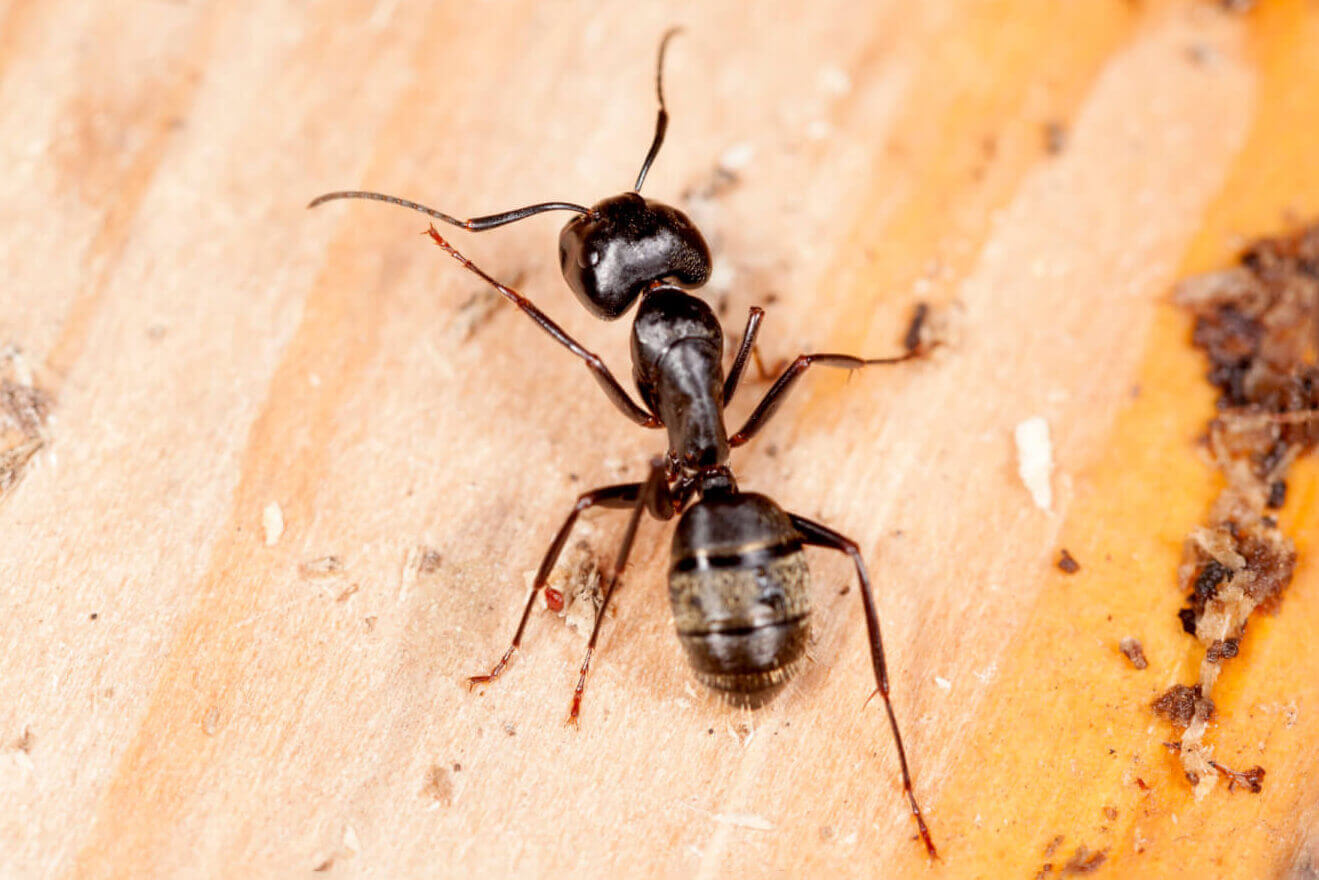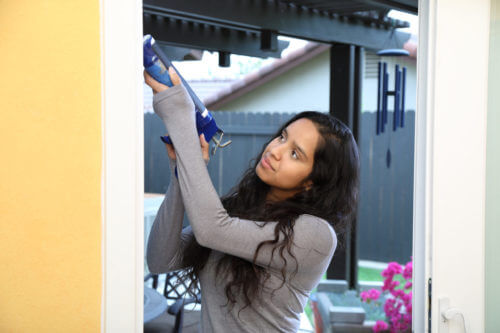Carpenter Ant Facts & Information
Everything you need to know about carpenter ants
What Do Carpenter Ants Look Like

Carpenter ants get their name from their nest building, where they will excavate the wood and form smooth tunnels inside of the wood. Carpenter ants do not eat wood, they only tunnel and chew through wood to create nests. The western black carpenter ant colony, when mature, contains about 10-20,000 workers, with large colonies of more than 50,000 individuals. There is usually only one functional, wingless queen per colony. Swarmers are not produced until the colony is more than two years old. They are produced in the previous year and held over the winter in the nest for release the following year. Swarmers appear from May until August in the eastern United States and from February through June in the west.
Not the ant you have?
how did i get carpenter ants
what Problems do carpenter ants cause

how can i prevent carpenter ants
The only external sign of a carpenter ant infestation other than the presence of workers and/or swarmers is the appearance of small openings on the surface of wood. Through these, the ants expel debris, which consists of sawdust-like shavings and/or fragments of insulation and insect body parts. The accumulation of this debris below the holes is a good indication of an active infestation. The gallery walls that carpenter ants create are smooth, with a sand-papered appearance. Active galleries are kept clean of debris.
Why Western for carpenter ant control
100% Satisfaction Guarantee
24-Hour Guaranteed Response
Board Certified Entomologists
Welcome to Western Pest Services, Your Trusted Carpenter Pest Control Company
Read on to discover how our proven solutions can resolve any carpenter ant issue, no matter the scale.
Benefits of Pest Control for Carpenter Ants
Invest in carpenter ant pest control to ensure the longevity and safety of your home.
Ways to Determine You Need the Help of Carpenter Ants Pest Control Services
Contact a professional carpenter ant pest control near me at the first sign of infestation to prevent further damage.
How to Get Rid of Carpenter Ants Outside Your Home
Implementing these strategies effectively reduces the risk of carpenter ants invading your home. Consider professional pest control carpenter ants services for comprehensive protection.
Frequently Asked Questions
What are the signs of a carpenter ant infestation in my home?
Signs of a carpenter ant infestation include the presence of worker ants in search of food, piles of wood shavings near wood sources, and the sighting of ant nests along window sills, crawl spaces, and moist, damaged wood areas. Observing ant activity around utility lines and tree branches near your property can also indicate a larger colony presence.
How does a carpenter ant infestation cause structural damage?
Carpenter ants cause structural damage by excavating wood to create their nests, which can weaken the integrity of wood structures over time. Commonly affected areas include moist, damaged wood around window sills, door frames, and exterior treatments, leading to costly repairs if not addressed promptly.
What differentiates a parent nest from a satellite nest in carpenter ant colonies?
The parent nest of carpenter ant colonies typically contains the queen, young larvae, and eggs and is often located in moisture-damaged wood outside the home. Satellite nests, which may be found in drier, indoor locations such as behind drywall or in hard-to-reach areas, usually house mature larvae, pupae, and numerous worker ants, all part of the entire colony.
What effective treatment methods are used for controlling indoor carpenter ant damage?
Effective treatment for controlling indoor carpenter ant damage includes locating and eliminating both parent and satellite nests. Our approach involves a detailed report of pest activity, targeted removal of nests in indoor nests and exterior areas, and treatments that address moisture damage to prevent future infestations, ensuring a pest-free home.
How can I ensure long-term prevention of carpenter ant activity?
Ensuring long-term prevention of carpenter ant activity involves regular inspections to identify and eliminate potential food sources and entry points, managing moisture damage properly, and applying preventive exterior and interior treatments. Keeping an eye on previously affected and potential wood sources, and maintaining a clean environment free from food debris are critical steps for a pest-free property.
Can carpenter ants be found in areas other than wood?
While carpenter ants primarily nest in wood, they can also be found in other moisture-rich environments. These include areas around window sills, beneath roof shingles, or within insulation where moisture damage has occurred. Identifying and treating these less obvious habitats is crucial for a comprehensive carpenter ant control strategy.
What steps are included in a professional carpenter ant extermination process?
A professional carpenter ant extermination process typically starts with a detailed inspection to locate all carpenter ant nests, including hard-to-reach areas and potential entry points. This is followed by the application of effective treatment options tailored to your specific infestation, such as baiting systems or direct nest treatments. Finally, a detailed report is provided, outlining the treatment performed and recommendations for preventing future infestations, ensuring peace of mind for homeowners.
Say goodbye to carpenter ants.
